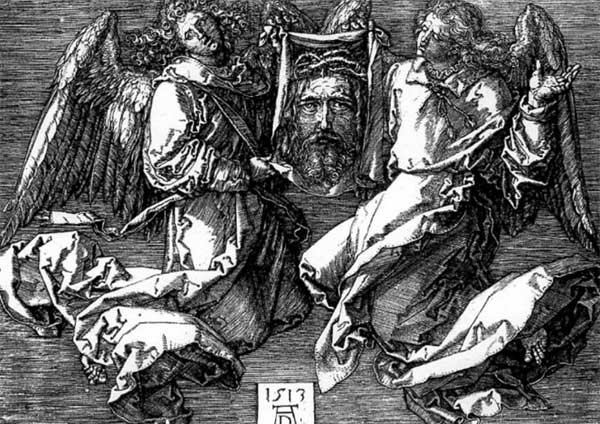
Idols are worrisome objects. From ancient times to the present day, theological traditions have reflected on idolatry and questioned the transcendence, significance and power of objects.
In ancient Mesopotamia, for example, a cult statue would have been installed in a temple only after an elaborate ritual in which artisans proclaimed not to have made the idol and had their hands symbolically chopped off. Finding such ritual denials ineffective, the Bible’s second commandment—outlawing the making of graven images—deemed all object worship idolatrous. Nevertheless some Christian theologians embraced representations of Christ and contended that such images were valid because Christ himself was the word made flesh. Pictured is Albrecht Dürer’s Sudarium Displayed by Two Angels, 1513, in which the image of the divine Christ—who just happens to bear a striking resemblance to the artist Dürer—has been turned into an object of veneration. Is this an image of piety or hubris?
By juxtaposing Mesopotamian cult figures with Classical antiquities and Renaissance paintings, Idol Anxiety examines how objects become idols and offers insight into the sometimes uneasy relationship between people and things.
Already a library member? Log in here.
Institution user? Log in with your IP address.

